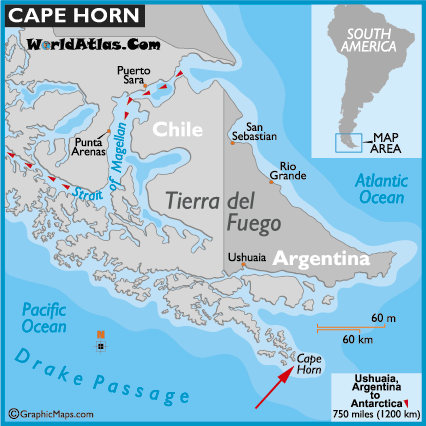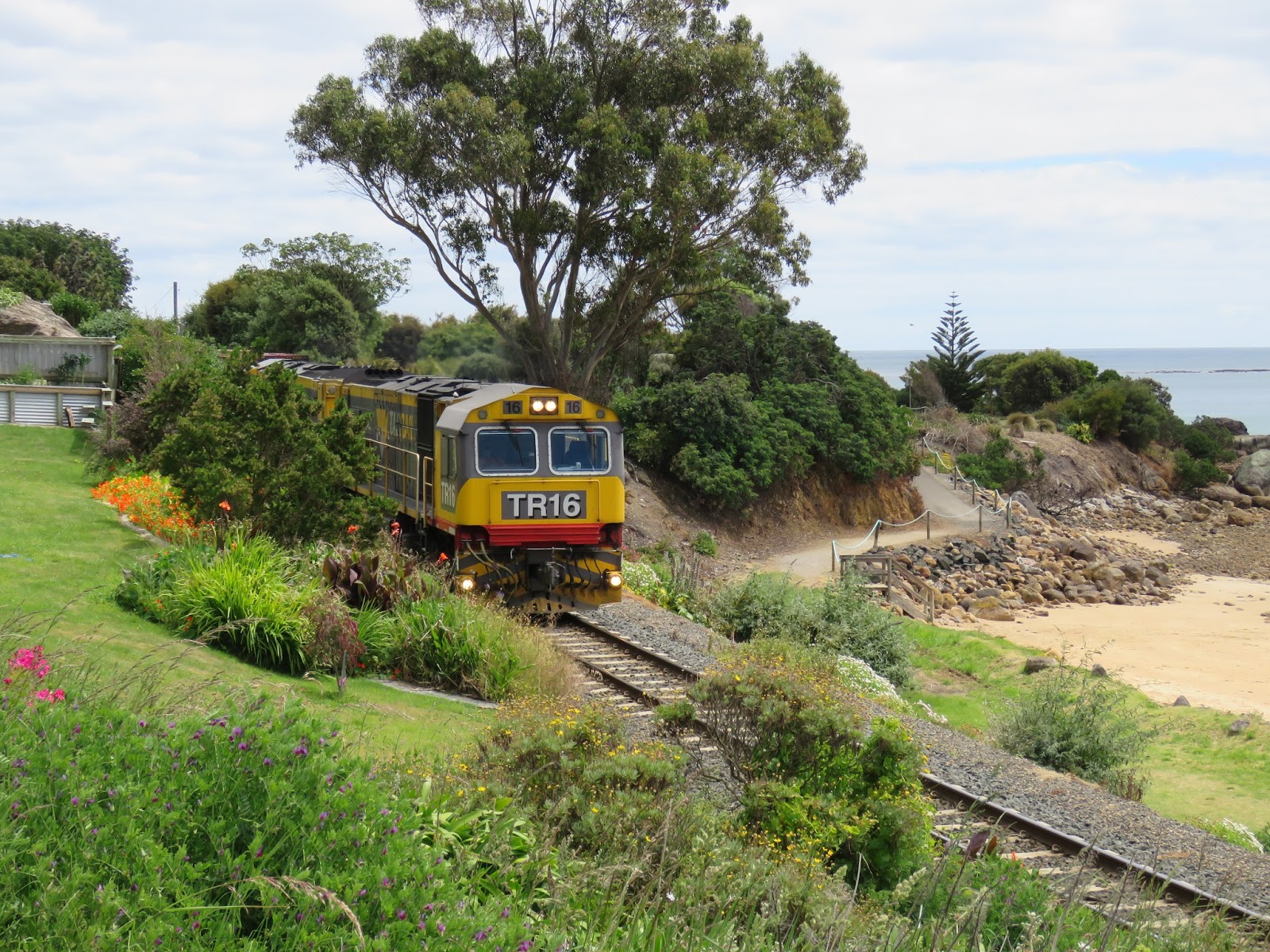 |
| The end of this small island off the coast of Punta Del Este, Uruguay, looked unusual with the tall trees. |
“Sightings from the Veranda while Cruising”
 |
| View from the veranda of the town of Ushuaia, our favorite port of call on this cruise. |
The time has flown quickly, which is typical while cruising. Seemingly, suddenly, it’s coming to an end. In a mere 48 hours, we’ll be off the ship and on our way to our hotel in Buenos Aires.
We’ve hardly noticed that it’s Christmas time, although the ship is decorated in many areas. It’s time to get ourselves into the holiday spirit, but over these past five years of travel, it seems to have alluded us to a degree with no home, no tree, no gifts, and no family, with whom to celebrate in person.
Instead, we focus on the spiritual meaning of this time of the year and find our own unique ways to make it memorable for both of us. Magically, as is the nature of the holiday season, opportunities present themselves, and somehow we find our hearts filled with the merriment of the season in one way or another. This year will be no exception.
 |
| Punta del Este is a popular summer holiday location. |
Of course, there Tom’s birthday on the 23rd. Although we don’t exchange gifts, we each find a way to make our birthdays memorable for one another. This year will be no different as we settle into our boutique hotel in the Palermo area of Buenos Aires on the day of his birthday.
Last night, we eliminated one task we had planned for Buenos Aires when we used the balance of our cabin credit of US $210 to purchase another duty-free camera. Yes, I’d have liked to upgrade to a higher quality camera, but with the 21% VAT tax imposed on all purchases in Buenos Aires, we felt buying it duty-free on the ship made more sense economically.
 |
| A small uninhabited island off the coast of Punta del Este. |
We purchased an identical camera to our current camera, a Canon Power Shot SX60 HS, for several reasons:
1. We’re both comfortable using it
2. It takes excellent photos.
3. We already have four batteries (the new purchase makes it five batteries). We have three battery chargers. (We easily recall running out of batteries while on safari in the Masai Mara over four years ago. This will never happen again)!
4. The price online at Amazon was the same price we paid last night on the ship at US $429, but we avoided US sales tax, shipping costs, customs fees, and VAT tax. It was a no-brainer.
5. With the remaining non-refundable cabin credit of US $210 to use toward the camera, we are left with a balance of US $229 on our cruise bill for this second leg. This made sense to us.
With this task out of the way, we’re greatly relieved. Once the holidays end, we’ll tackle the remaining tasks; travel clinic for vaccination updates, new epi-pens, and malaria pills; dentist for my tooth; and purchase a few toiletries for the Antarctica cruise.
 |
| View from the ship of yesterday’s port of call, Punta del Esta, Uruguay. |
Speaking of the Antarctica cruise, yesterday we were shaken when we received an email from our rep at Vacations-to-Go, stating she received an email from Ponant stating they never received any of our vital documents (including passport copies, ID info, and medical documents), which we’d sent by email on November 3, 2017.
In searching through my “sent” email, I found the original message we’d sent that included everything they’d requested well within the range of their required dates.
How did this happen? Most assuredly, it was lost on their end. I ran into trouble trying to resend the 19 PDF pages with the ship’s poor Wi-Fi signal. After several attempts, I decided to send them in five small batches. After patiently waiting for each one to “go,” we finally received confirmation from Ponant that they’d received everything. Whew! That could have been a nightmare!
 |
| Christmas display on deck 10. |
Here again, we could kick ourselves for not confirming they received the documents once we sent them. We should have learned our lesson when a few months ago, the same thing happened when Railroad Retirement (for Medicare) said they hadn’t received Tom’s waiver of Part B. At that time, we also had confirmation the document had been sent as required. Again, we had to resend the document.
Oh, well. I guess we live in a world where one must check and recheck, never making assumptions about the efficiency of a variety of systems within our realm. So it goes.
Today, our ship is docked in Montevideo, Uruguay, and once we’ve uploaded today’s post, we’ll be disembarking the ship to check out the big city. Tomorrow, we write about our experiences and share many photos we’ll take during our visit.
 |
| Christmas display on deck four outside the Trellis restaurant. |
Tomorrow, we’ll pack and begin sharing favorite photos from this cruise and prepare the “final expenses” to share on the 23rd. If you’d like to see where we’ve traveled thus far in South America and throughout the world, please click on the link under the map on the right side of our main page, under the photo of us in Petra, Jordan.
It even shocks us when we see where we’ve been. And, it scares us even more, when we realize how much more there is yet to see. The world is a vast place, and we’re happy all of you, our dear and loyal readers, are with us along the way.
Continue to enjoy your holiday festivities if you celebrate this occasion and if you do not, enjoy your every day as if it was a holiday!
Photo from one year ago today, December 21, 2016:
 |
| The wind causes a rippled pattern on the white sand beach in Binalong Bay in Tasmania. For more photos, please click here. |




























































































































